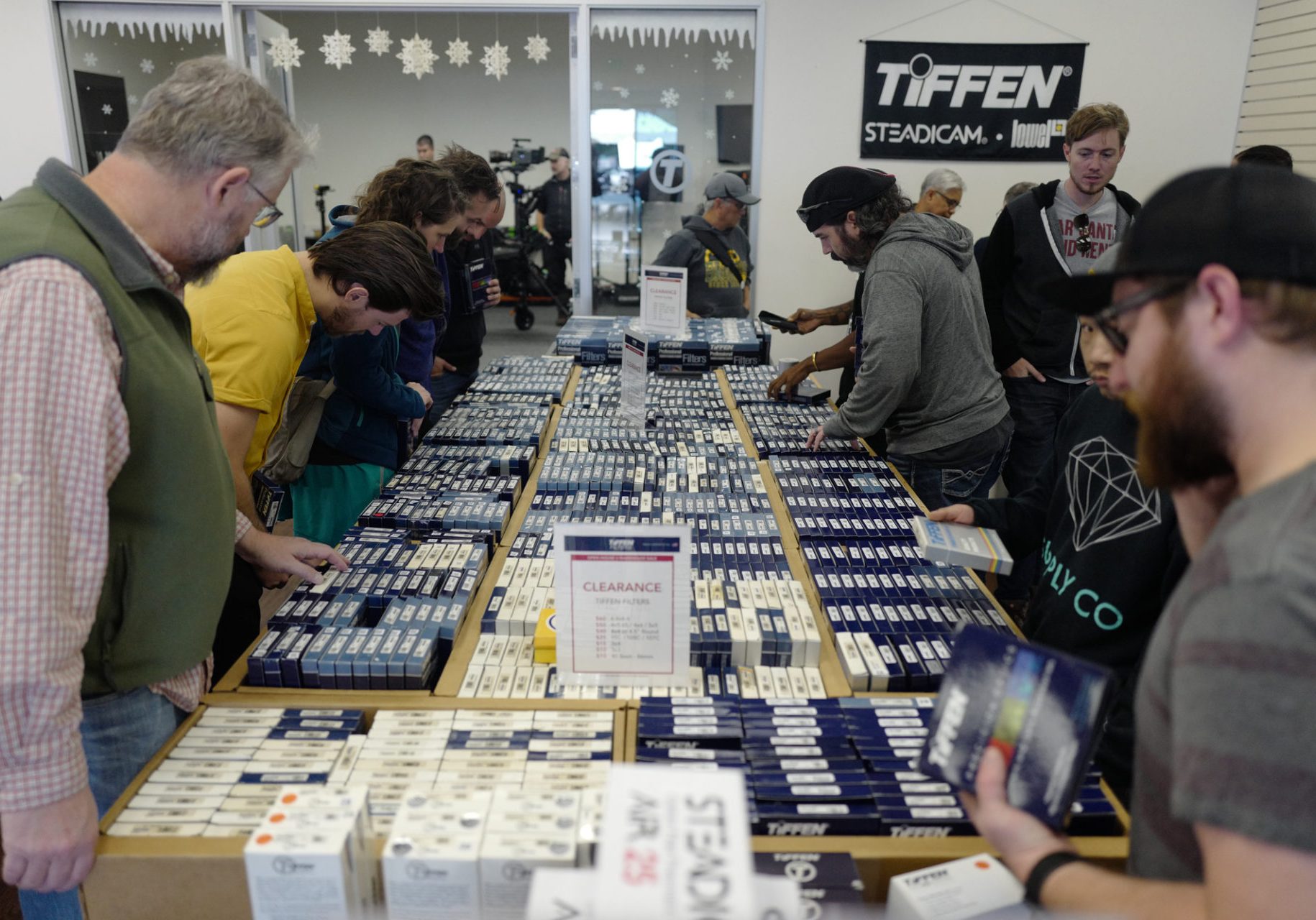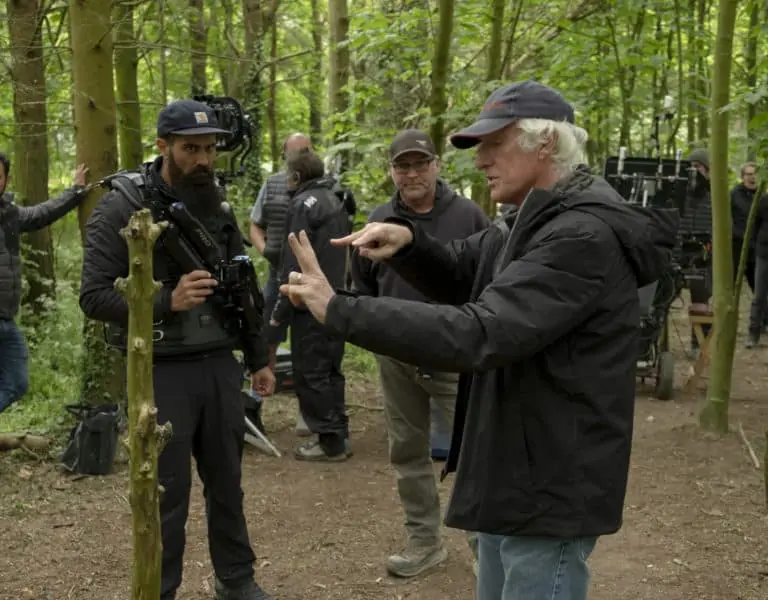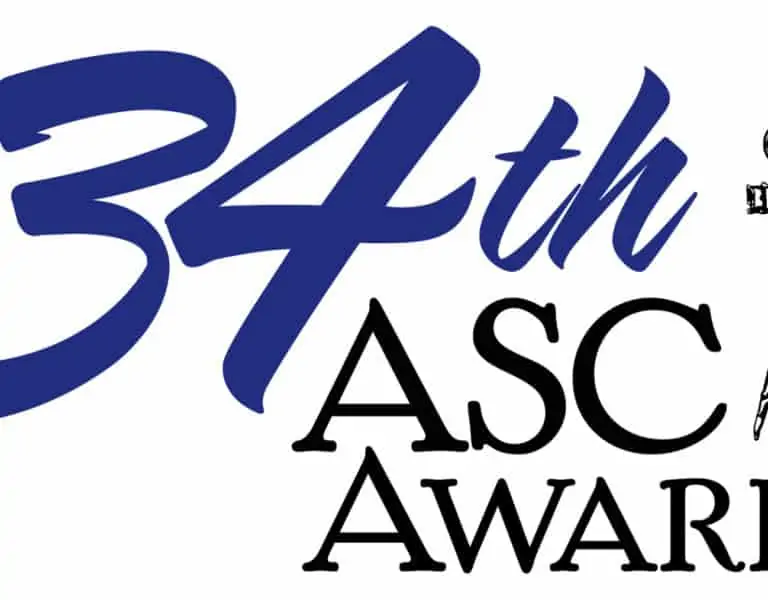To Make The Drama Work
Across The Pond / Mark London Williams

To Make The Drama Work
Across The Pond / Mark London Williams
Lead image: Mihai Malaimare Jr. points the way during production on Jojo Rabbit
It's Boxing Day as we sit down to unpack the items slated for the current column, and it will be a brand new year by the time you read it.
And we have brightly colored items all over the place - the question being whether we can fit them all into the particular "box" here. One such would be our conversation with production designer Sebastian T. Krawinkel, talking about his collaboration with director Terence Malick - and cinematographer Jörg Widmer - on A Hidden Life, the story of Franz Jägerstätter, a Viennese farmer who refused to fight for the Nazis.



Using multiple locations that were put together to stand in as single ones (the Jägerstätter farmstead, a local restaurant where he realizes how local support - and capitulation - to the Nazis is growing, etc.) Krawinkel said the director has the ability to "float around problems like water around rocks. He goes where the light is good, or where there's an instant moment he wants to capture. I won't say it's improvised, but it's all very true." As a result, "everything needs 360 degrees genuine."
Malick would also seem to prefer a genuine history with his collaborators, as well: Krawinkel had art directed earlier films from the same producers, and Widmer had camera operated for "Chivo" Lubezki on the director's Knight of Cups and Tree of Life. Krawinkel notes that he'd worked with Widmer "several times on features," too, and that Malick's latest crew "kind of grew together… since we were such a big family."
Another director with a similar view of family might be Todd Haynes, who also returns to familiar collaborators on each project. And so it was that he brought on Edward Lachman ASC, to shoot the Mark Ruffalo-produced-and-starring Dark Waters, a "true events" film about how "forever chemicals" like PFOAs - used in the manufacture of Teflon - have wound up in my bloodstream, and yours (though the film focuses on dumping in a literal stream, in West Virginia, next to a Dupont plant).
Ed had worked on such notable Haynes' films as Carol, Wonderstruck, and Far From Heaven, and was part of a panel after this particular screening that included actor Tim Robbins - who plays a senior partner in the Ruffalo character's firm - and editor Affonso Gonçalves (another Carol alum).
Lachman talked about finding "a language that fits the film," and for this project, talked about referencing Alan J. Pakula movies from the '70s, the work of cinematographer Gordon Willis, and films like Silkwood. And while we had a grand time chatting with him afterwards (so casually we weren't really taking notes) about how he pushed the ALEXA Minis and Cooke Panchros and zooms to so convincingly look like film (especially the green and yellow hues - which led to a whole side conversation about the way colors pool on film vs. digits, which we may not get to this month), the most poignant moments came during the panel.
Lachman referred to his own current mobility challenges, noting that he has "a physical impairment." Earlier in his life, he'd gone to school in the Ohio Valley for a few years, not far from where DuPont was dumping chemicals in West Virginia (indeed, Ruffalo's character is constantly driving from Cinicinnati to West Virginia in the film). Blood tests, Lachman said, showed that he has "heavy metals and contamination" in his own system, and whether these directly caused his current issues (and whether he acquired all those "contaminants" while studying in Ohio), can probably never be conclusively proven.
But he was left to wonder the whole time he was working on the film.

Meanwhile, they filmed in many of the film's original locations - including the actual offices where Robert Billot, the real-life lawyer behind the case(s) worked, and Lachman said that the lighting was consistent throughout - and through windows - because "luckily it was an overcast, wintry time."
Which might serve as a metaphor for much of the current condition - even the overheated parts.
Another cinematographer, tackling an even darker subject - though attempting to tell its story in a lighter vein - was Mihai Malaimare Jr., who shot Jojo Rabbit for director Taika Waititi. We'd also talked to him when last year's The Hate U Give was out, so tackling complex themes clearly doesn't phase him. Indeed, he told us that after the reshoots for Hate, he got to spend all of four days at home, and then it was off to Prague for prep on Jojo.

"We thought about not having - not being able to tell if it's day or night," he told us, about some of the visual choices they were making during that prep. And referring to the crawlspace in which "Jojo's" mother is hiding a teenage Jewish girl, says they'd thought about candles, too. "It was supposed to be dark - always about finding the right balance."
They'd started the movie "with more saturation," which came from a lot of color World War II footage (Malaimare recounts how "shocked" he was when he first saw it, since so much of the war is perceived, in retrospect, in "black and white"), and then shifted "toward a colder color palette toward the end of the movie."
To mimic that saturation, he shot on an ALEXA with a square sensor, in 1.3 anamorphic, allowing them to shoot in almost double width "and then crop it," winding up with 1.85 anamorphic. They added a LiveGrain filter, "which, compared to all the other filters," better simulates a film and has "a three-dimensionality," they wanted as part of that saturated look. Besides, Malamare notes wistfully, "there are not that many film stocks available today."
Or as this year's ASC Lifetime Achievement honoree Frederick Elmes says, "I try to make it very simple for myself - I obviously grew up with Kodak film for the most part." But whether shooting film or digits - and for the latter, he prefers ARRIs as "something that I can count on, and it's one less thing to worry about" - he's had a wide array of collaborators and renowned projects, stretching from directors like David Lynch (Eraserhead, Blue Velvet), John Cassavetes (The Killing of a Chinese Bookie), Ang Lee, Jim Jarmusch, Bill Condon, Charlie Kaufman, and more, nabbing Indie Spirit Award wins for Night on Earth and Wild at Heart, and an Emmy for the HBO series The Night Of.
But for the latter, this was a case where DP and director didn't want "grain" as part of the look. "We chose very cool tones, dark settings, sharp images without grain," Elmes recounts. "Seamless images." Since Elmes shot the last four of the eight episodes, the writer/director, Steve Zaillian, told him "they don't all have to match. You can go darker." Zaillian, he says, "really appreciates the visual style of things. He's a photographer at heart."

Of another HBO collaboration, for the series Olive Kitteridge, he says he really "enjoyed working with (director) Lisa Cholodenko - you're really making four features back-to-back," owing to each of the four segments being a specific point in time in the story's 25-year trajectory. "Lisa's attention to story and character really inspired me."
But then, Elmes feels he's always been "lucky to collaborate with directors who had a point of view." Lynch, he says, "has a point of view about darkness - it grows out of his paintings, I'm sure."
And though clearly it's his work, and not luck, that brings him to this ASC Award, Elmes, who recalls encountering an issue of American Cinematographer back when he was around high school age, says it's "an honor to receive an award from this particular organization, that I've always held in great esteem. I feel in good company."
He cites other Lifetime honorees like Caleb Deschanel, John Toll, Roger Deakins, and the aforementioned Ed Lachman as part of the company he feels honored to be in. They all doubtless share a bottom line similar to the edict that guides Elmes' work - whether working with LEDs, Tungsten, or anything else: "You put the light," he says "where it needs to be to make the drama work."


Meanwhile, we have two other boxes to quickly unpack, each of them about the places where you might get your light - or the cameras, mounts, harnesses, etc. to go with them.
We refer to the December open houses of both the Tiffen Company and Band Pro Digital. The one at Tiffen (above) was a winter reprise of their post-Cine Gear event, and marketing VP Seth Emmons says it "saw more people than ever in attendance and taking advantage of great savings from our warehouse sale. We love throwing these events to bring the community together and are thankful for the other companies who joined us in supporting this event. We're already talking about ways to improve for our summer open house."
Meanwhile, one cinematographer of our acquaintance had tried one of the newest Steadicam rigs while he was there, and suddenly thought he couldn't live without it. Which indicates the product demo part of the event was also successful - though the taco plates were pretty good, too.


And a few days earlier, the plates were overflowing, as per tradition, at the Band Pro Open House (above), which this year enjoyed crisp weather in contrast to last year's floods. There were plenty of demos and dealers there, too - including Angénieux with its latest full frame Optimo Primes, Canon with its upcoming C500 Mark II, which the company's Tim Smith describes as a "mini MINI," and - in keeping with the current fullness of frames - Matthews CAM Tank, a mount designed for Dutch angles and low shots, while retaining the ability to pan and tilt, while close to the ground.
As they said at their demo booth, "we're trying to change with the cameras."
And change, as we know, is really life's only constant. That said, some rituals recur, and we'll have coverage of those when we see you here next month. Meanwhile: @TricksterInk and AcrossthePondBC@gmail.com 'til then.
Happy 2020!




